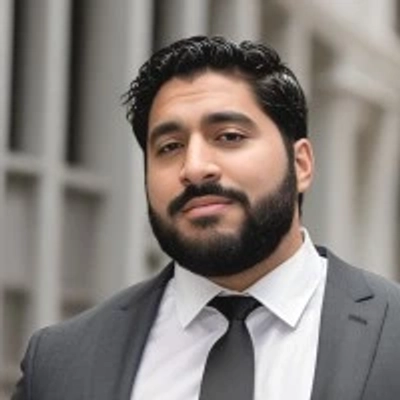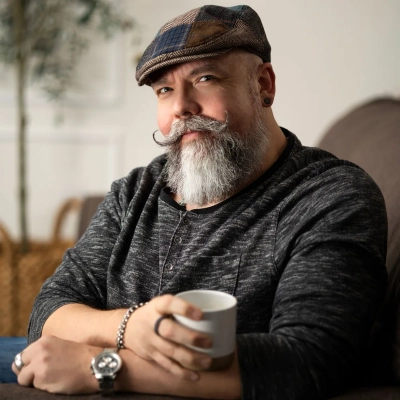How Fitness Will Become More Accessible to Underserved Populations and Transform Mainstream Approaches
Fitness experts are reshaping accessibility through innovative approaches that bring physical activity into everyday community spaces and non-traditional hubs. The transformation includes text-based coaching solutions utilizing simple equipment and groundbreaking medical-fitness partnerships designed to remove longstanding barriers. Digital programs prioritizing inclusivity are creating pathways for underserved populations to access fitness resources that were previously out of reach.
Fitness Embedded in Everyday Community Spaces
I think one of the biggest shifts ahead is fitness moving away from traditional gyms and embedding itself in everyday spaces. For years, access has been limited by cost, location, or equipment. But as more community-based and tech-driven options emerge, movement is starting to meet people where they already are — in parks, community halls, housing estates, workplaces and living rooms.
A big part of this evolution could be a surge in video-based personal trainers. As streaming becomes more seamless and affordable, people who've never set foot in a gym will have access to tailored guidance on their phones or TVs. Instead of needing a membership or expensive equipment, they'll be able to join sessions that fit their lives, their pace, and their cultural context.
As this grows, mainstream fitness will have to shift too. It'll move further away from a one-size-fits-all, image-driven model and lean into accessibility, personalisation, and flexibility. Fitness won't feel like an exclusive space anymore — it'll be something you can step into from your living room, your local park, or your phone. And that could transform how people build movement into their everyday lives.

Functional Training in Non-Traditional Community Hubs
Fitness for a roofing crew isn't about aesthetics; it's about structural readiness. The way I anticipate fitness becoming accessible to previously underserved populations is by dismantling the existing structural barrier of the high-cost, centralized gym model.
The current system has a structural flaw: Mainstream fitness is a luxury that requires specialized capital and travel time. This excludes people who need fitness the most—those whose labor defines their lives, but whose budgets prevent them from joining a specialized facility. They are often forced to rely on the limited fitness provided by the hands-on job itself, which leads to injury, not durability.
The solution will come from integrating simulated functional training into existing, non-traditional community hubs. This means leveraging low-cost technology—like AR-guided movement programs or simple, gamified functional training systems—and placing them in free, available community structures like schools, libraries, or community centers. The technology acts as a tool, not a centerpiece, turning simple floor space into a specialized training zone. This eliminates the twin barriers of cost and dedicated travel time.
This shift will influence mainstream fitness by forcing it to prioritize functional durability over vanity. When people train with simulated systems, they will demand programs that focus on strengthening the body for the hands-on demands of their real work—simulated lifting, climbing, and core stability for prolonged labor. Mainstream gyms will have to stop selling expensive mirrors and start selling measurable structural capacity and resilience.
The best way to ensure fitness accessibility is to be a person who is committed to a simple, hands-on solution that brings specialized structural training out of the luxury market and into the community.
Community Digital Programs Prioritize Inclusivity
The expansion of community-based digital fitness programs is likely to redefine accessibility for underserved populations. Low-cost platforms that integrate smartphone-based exercise tracking, live-streamed group classes, and multilingual instruction have begun closing the gap left by expensive gym memberships and limited local facilities. As broadband access improves, these programs can reach rural and lower-income communities where structured fitness resources were once scarce.
This shift is already influencing mainstream fitness by prioritizing inclusivity and flexibility over exclusivity and competition. Programs are emphasizing functionality, health literacy, and long-term movement habits rather than performance metrics alone. Trainers and healthcare providers are collaborating to tailor exercise prescriptions that respect cultural norms and individual limitations. The result is a more equitable model of wellness—one where access, education, and sustainability guide the future of fitness participation.

Text Coaching With Simple Equipment Removes Barriers
The biggest unlock is insurer-funded, text-message coaching tied to simple at-home programs. SMS works on any phone, any language, no membership needed. Pair it with community walking clubs and a $10 resistance-band kit, and you've removed cost, travel, and tech barriers. Mainstream fitness will follow with shorter, equipment-light sessions and progress measured in steps and consistency.

Medical-Fitness Partnerships Create True Accessibility
Fitness will become more accessible when medical providers and community movement programs stop operating separately. A physician refers a patient to a program that accepts insurance or uses a sliding scale, the patient receives actual care, and the barrier between healthcare and fitness dissolves at the point of need.
This is already happening where physical therapists partner with recreation centers, where clinics build relationships with adaptive programs, where Medicaid referrals don't dead-end at chain gyms built for different bodies.
What makes this different is integrity and logistics. Can someone cancel a membership without defending their choices? Can a person with special needs enter the building and reach the equipment? Can we stop hiding financial gatekeeping behind "premium experiences"? Medical-fitness partnerships treat access as baseline requirement, not marketing opportunity.
Mainstream fitness will respond but not with sincerity. They'll rebrand it, strip out what costs money, and sell it back as "clinical wellness integration." They'll add medical advisors to websites, claim they're bridging gaps, and keep operating facilities never designed for these populations. Standardized equipment will still create standardized bodies. Profit will still dictate design.
But even hollow imitation creates pressure. Once medical necessity enters fitness conversation, the industry can't fully retreat. Insurance companies ask questions. Regulatory bodies notice. The gap between promise and delivery becomes harder to ignore. Real programs gain legitimacy. People who need them learn they exist.
Culture won't change quickly. Corporate, legal, and educational layers shift slowly. Regulation is hollowed out. Medicine lacks time. Economics lacks empathy. But demand won't wait for permission. When people told fitness isn't for them find programs proving otherwise, they talk. When professionals realize they can do meaningful work without compromising integrity, they stay.
Real access means level ground: safe entry, clear policy, and courage to uphold both even when it costs money. Medical-fitness partnerships make that possible by removing the industry's favorite excuse that accessibility isn't profitable. It is. It just requires treating people like patients instead of revenue streams.
That's what's possible. Every other failure is a choice.



